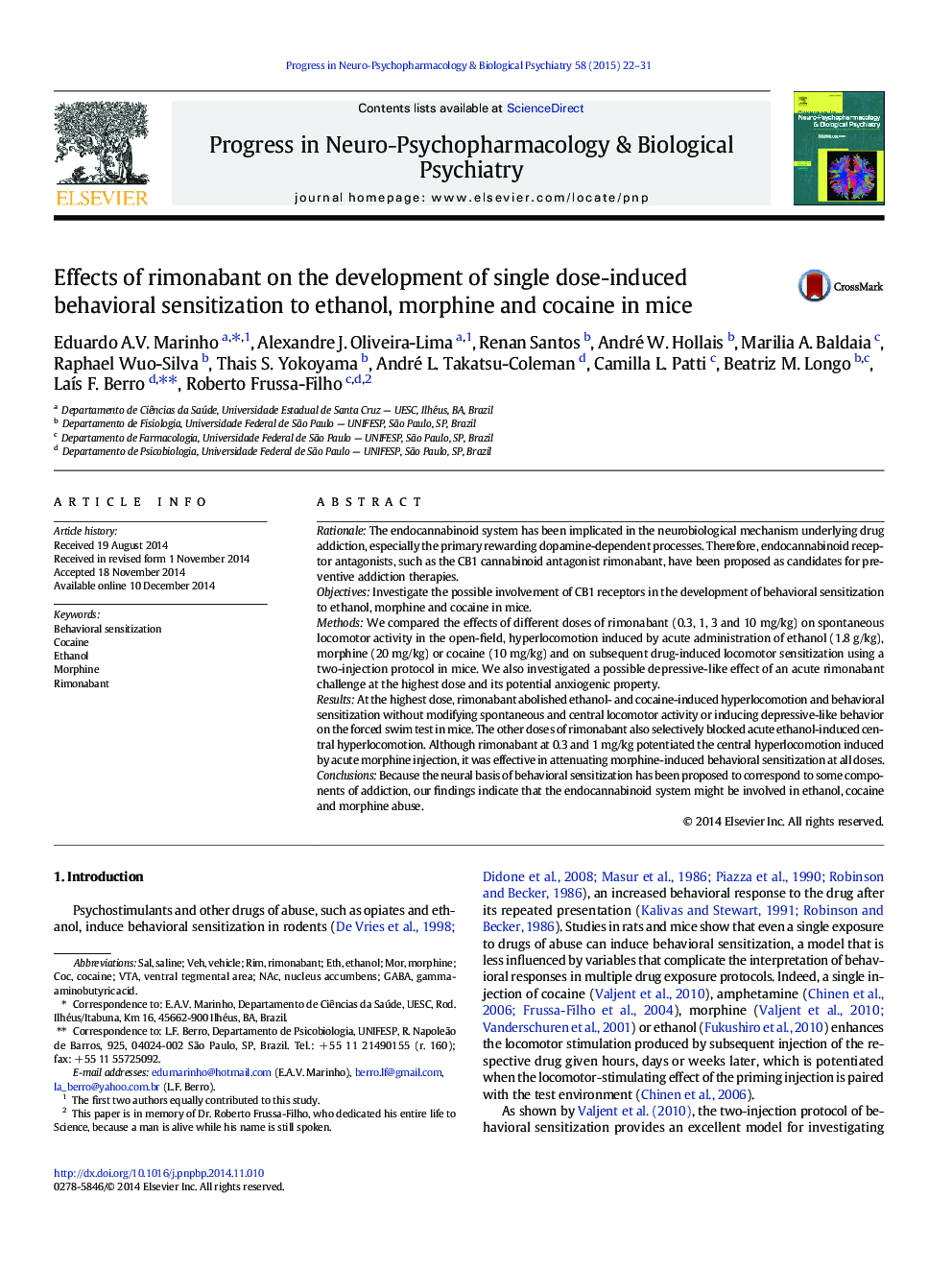| کد مقاله | کد نشریه | سال انتشار | مقاله انگلیسی | نسخه تمام متن |
|---|---|---|---|---|
| 5844367 | 1561036 | 2015 | 10 صفحه PDF | دانلود رایگان |
- Rim did not modify spontaneous/central locomotion or induce depressive-like behavior.
- Rim (10Â mg/kg) prevented Eth-induced hyperlocomotion and behavioral sensitization.
- Rim (10Â mg/kg) prevented Coc-induced hyperlocomotion and behavioral sensitization.
- Rim at lower doses selectively blocked acute Eth-induced central hyperlocomotion.
- Rim was effective in attenuating Mor-induced behavioral sensitization at all doses.
RationaleThe endocannabinoid system has been implicated in the neurobiological mechanism underlying drug addiction, especially the primary rewarding dopamine-dependent processes. Therefore, endocannabinoid receptor antagonists, such as the CB1 cannabinoid antagonist rimonabant, have been proposed as candidates for preventive addiction therapies.ObjectivesInvestigate the possible involvement of CB1 receptors in the development of behavioral sensitization to ethanol, morphine and cocaine in mice.MethodsWe compared the effects of different doses of rimonabant (0.3, 1, 3 and 10Â mg/kg) on spontaneous locomotor activity in the open-field, hyperlocomotion induced by acute administration of ethanol (1.8Â g/kg), morphine (20Â mg/kg) or cocaine (10Â mg/kg) and on subsequent drug-induced locomotor sensitization using a two-injection protocol in mice. We also investigated a possible depressive-like effect of an acute rimonabant challenge at the highest dose and its potential anxiogenic property.ResultsAt the highest dose, rimonabant abolished ethanol- and cocaine-induced hyperlocomotion and behavioral sensitization without modifying spontaneous and central locomotor activity or inducing depressive-like behavior on the forced swim test in mice. The other doses of rimonabant also selectively blocked acute ethanol-induced central hyperlocomotion. Although rimonabant at 0.3 and 1Â mg/kg potentiated the central hyperlocomotion induced by acute morphine injection, it was effective in attenuating morphine-induced behavioral sensitization at all doses.ConclusionsBecause the neural basis of behavioral sensitization has been proposed to correspond to some components of addiction, our findings indicate that the endocannabinoid system might be involved in ethanol, cocaine and morphine abuse.
Journal: Progress in Neuro-Psychopharmacology and Biological Psychiatry - Volume 58, 3 April 2015, Pages 22-31
